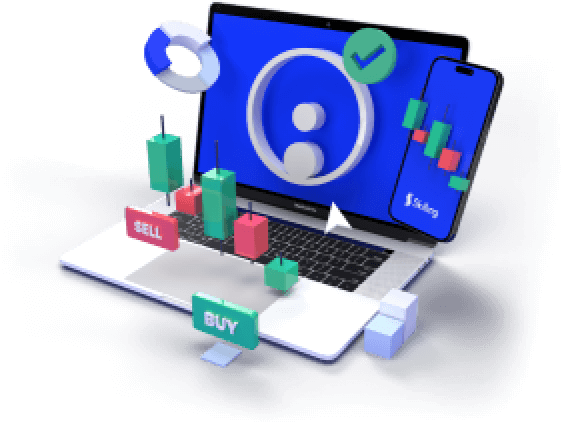

Imagine you have a company that makes and sells products. To see how well your company is doing, you need to understand how much money it makes from its main business activities. This is where operating profit comes in. Operating profit tells you how much your company earns from selling products or services after paying for things like salaries, rent, and other costs directly related to running the business. It doesn’t include extra income from investments or costs like taxes and interest. Essentially, it shows how well your core business is performing.
What is operating profit?
Operating profit is the amount of money a company makes from its main business activities after paying for the costs of running the business. To put it simply, it’s the profit a company earns from selling its products or services, minus the expenses needed to produce and sell them. This does not include money from other sources like investments or costs like taxes and interest.
Example of operating profit
Let’s look at Tesla (TSLA) as an example to understand operating profit. Suppose Tesla sells electric cars and makes significant money from its car batteries and solar products. To find Tesla’s operating profit, we focus on the income from selling these products and subtract the costs directly related to producing and selling them.

For instance, if Tesla’s total revenue from selling cars and batteries is $10 billion, and the costs to make and sell these products (including manufacturing, salaries, and materials) total $7 billion, then Tesla’s operating profit would be $3 billion. This $3 billion represents the profit from Tesla’s core business operations, excluding other factors like interest on loans or tax expenses.
Formula and calculation of operating profit
To calculate operating profit, you can use this simple formula:
Operating profit = Gross profit - Operating expenses - (Depreciation + Amortization)
Let’s break down the terms:
- Gross profit: This is the profit a company makes after subtracting the cost of producing the products or services it sells. It’s calculated as: Gross profit = Revenue - Cost of Goods Sold (COGS)
- Revenue: The total money earned from selling products or services.
- Cost of Goods Sold (COGS): The direct costs of producing those goods or services, like materials and labor.
- Operating expenses: These are the costs required to run the company’s day-to-day operations, such as rent, utilities, salaries, and marketing expenses.
- Depreciation and amortization: These are accounting methods used to spread out the cost of large assets (like machinery or intellectual property) over their useful lives.
What's your Trading Style?
No matter the playing field, knowing your style is the first step to success.

To see how this works, imagine a company has:
- Revenue of $500,000
- COGS of $200,000
- Operating expenses of $100,000
- Depreciation and amortization of $20,000
First, calculate the Gross profit:
Gross profit = Revenue - COGS = $500,000 - $200,000 = $300,000
Next, subtract the Operating Expenses, Depreciation and Amortization from the Gross Profit:
Operating profit = Gross Profit - Operating Expenses - (Depreciation + Amortization)
Operating Profit = $300,000 - $100,000 - $20,000 = $180,000
So, the operating profit is $180,000, which represents the profit made from the company’s core operations after covering its operating expenses and the cost of long-term assets.
Operating profit vs. Gross profit
| Aspect | Gross profit | Operating profit |
|---|---|---|
| Definition | Profit after deducting the cost of goods sold (COGS) from revenue. | Profit after deducting operating expenses, depreciation, and amortization from gross profit. |
| Formula | Gross profit = Revenue - COGS | Operating profit = Gross Profit - Operating Expenses - (Depreciation + Amortization) |
| Focus | Measures profitability from core product/service sales, excluding other expenses. | Measures profitability from core business operations, including all operating expenses. |
| Includes | Revenue and direct costs of production (COGS). | Gross Profit, operating expenses (like salaries, rent, utilities), depreciation, and amortization. |
| Excludes | Operating expenses, interest, taxes, and non-operating income. | Interest, taxes, and non-operating income (like investment earnings). |
| Purpose | Indicates how efficiently a company produces and sells its products. | Provides a clearer picture of overall business performance from core operations. |
| Example | If a company earns $500,000 in revenue and has $200,000 in COGS, the gross profit is $300,000. | From the same company, if the gross profit is $300,000, operating expenses are $100,000, and depreciation is $20,000, the operating profit is $180,000. |
What better way to welcome you than with a bonus?
Start trading with a $30 bonus on your first deposit.
Terms and Conditions apply

Conclusion
As you've seen, operating profit is a crucial metric for understanding a company's financial health, focusing on profitability from core operations. It excludes non-operating factors like taxes and interest, clearly showing operational efficiency. However, it's important to note that operating profit is just one aspect of a company's financial picture. Other factors, such as net profit and cash flow, also play essential roles. Always consider these alongside operating profit when assessing a company's performance. Source: investopedia.com
Enjoyed the content? Visit the Skilling blog today to learn more about finance and trading.











